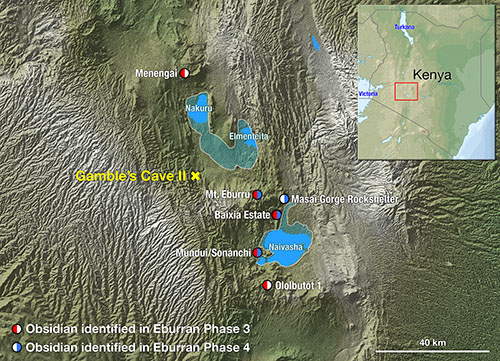
A new paper from Y-PYRO Director Ellery Frahm and Christian Tryon of Harvard University was published online today at Journal of Archaeological Science: Reports. As described in the abstract, “The complexities of Later Stone Age environmental and behavioral variability in East Africa remain poorly defined, and toolstone sourcing is essential to understand the scale of the social and natural landscapes en- countered by earlier human populations. The Naivasha-Nakuru Basin in Kenya’s Rift Valley is a region that is not only highly sensitive to climatic changes but also one of the world’s most obsidian-rich landscapes. We used portable X-ray fluorescence (pXRF) analyses of obsidian artifacts and geological specimens to understand pat- terns of toolstone acquisition and consumption reflected in the early/middle Holocene strata (Phases 3–4 of the Eburran industry) at Gamble’s Cave II. Our analyses represent the first geochemical source identifications of obsidian artifacts from the Eburran industry and indicate the persistent selection over time for high-quality obsidian from Mt. Eburru, ~20 km distant, despite changes in site occupation intensity that apparently correlate with changes in the local environment. This result may indicate resilience of Eburran foraging strategies during environmental shifts and, potentially, a cultural preference for a specific lithic material that overcame its ac- cessibility changes. Testing such hypotheses requires a more extensive program of obsidian artifact sourcing. Our findings demonstrate the great potential for sourcing studies in the Rift Valley as well as underscore the amount of work that remains to be done.”